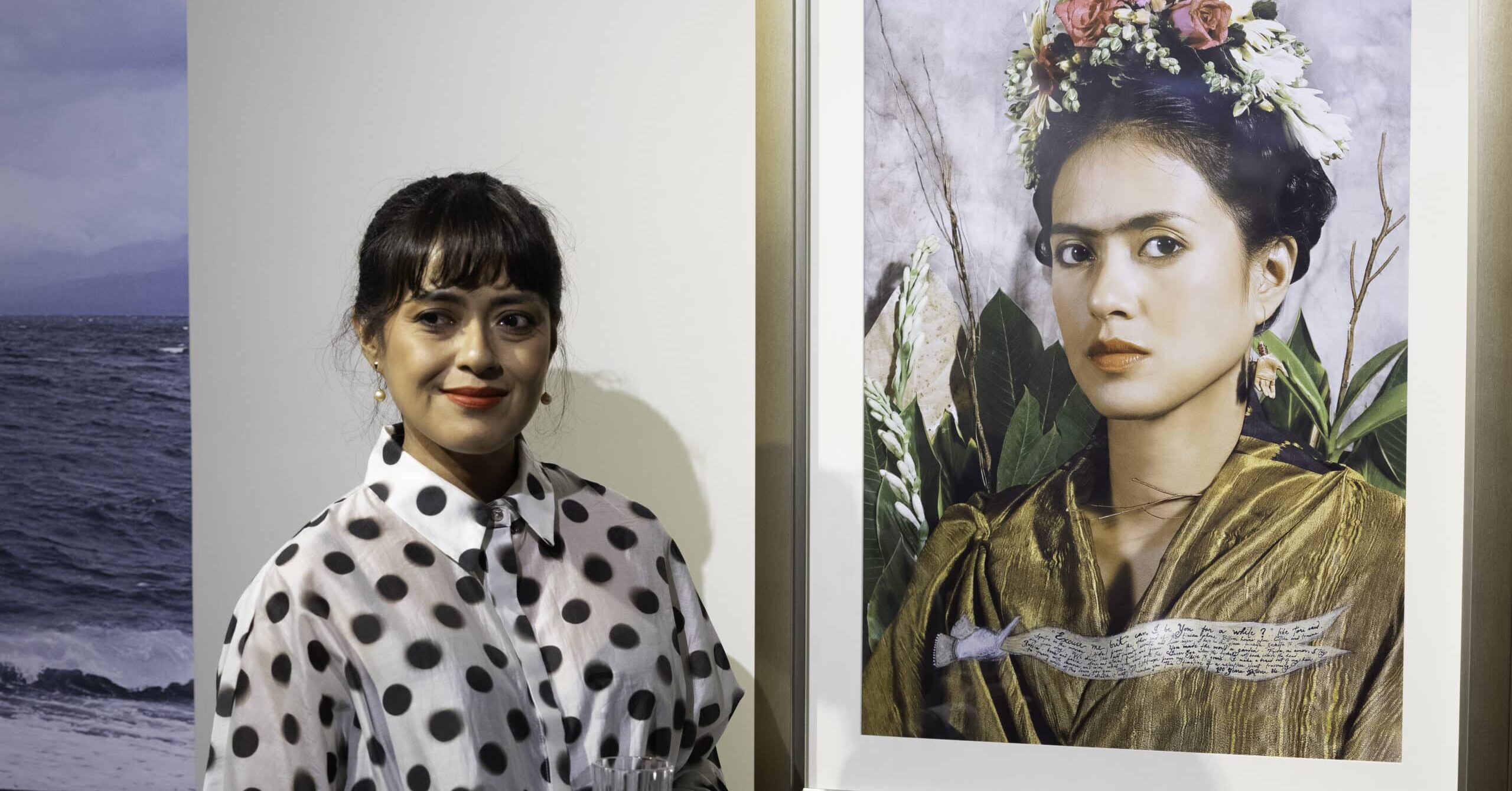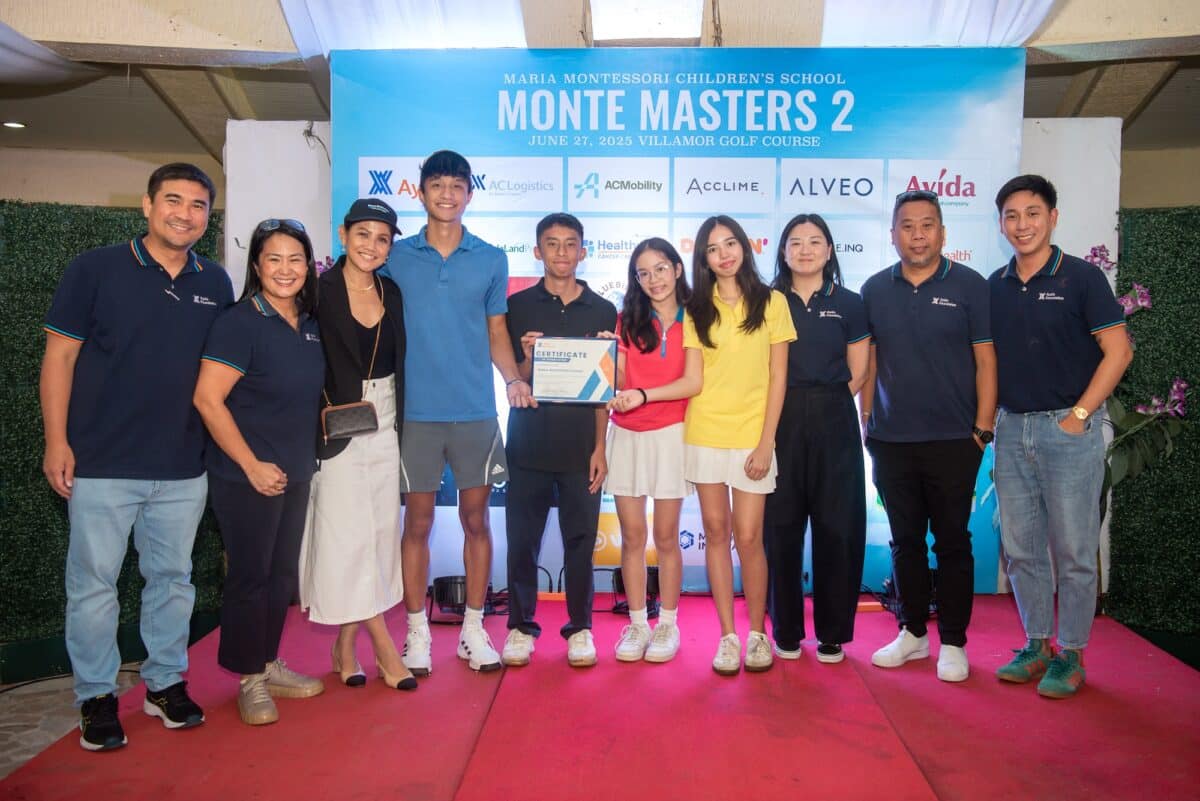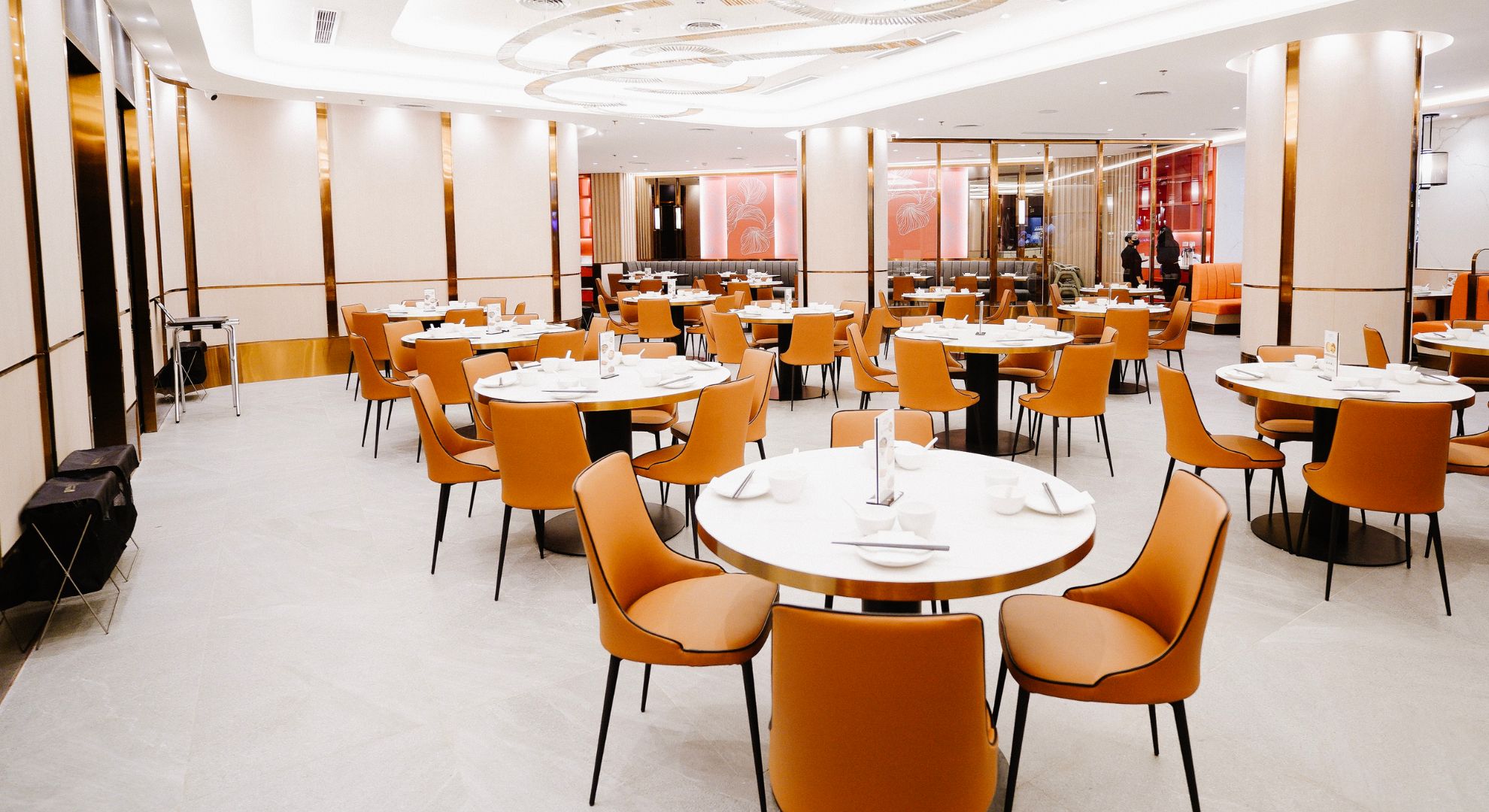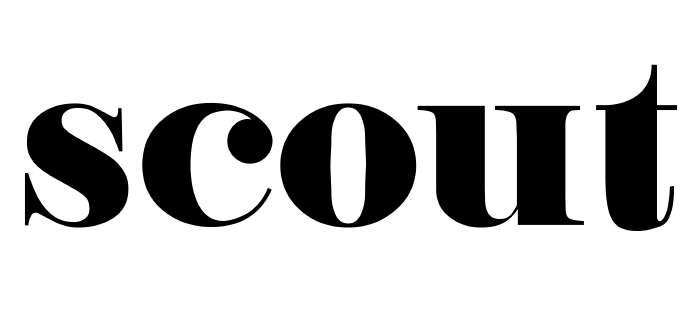Paris is always a good idea, so said Audrey Hepburn. And in May, in the springtime light and air as crisp as the sun is mild, it’s a great idea. Throw in tickets to the French Open at Roland Garros—the women’s semifinal and ground passes for the men’s semifinal, then for a tennis-playing, tennis fan couple, it is a dream come true, no matter who we were scheduled to see.
While we admit, we harbored hopes that our very own Alex Eala or even former US Open 2021 finalist Leylah Fernandez might still be in the running, we knew these were long shots that none of it mattered. We booked the airfares and the hotel because life is short and you only live once. You have to take your chances, play your game, and go for your shots.
While we admit, we harbored hopes that our very own Alex Eala or even former US Open 2021 finalist Leylah Fernandez might still be in the running, we knew these were long shots that none of it mattered
We found ourselves in Paris on a brisk, rainy morning, in fact the forecast indicated rain for the entire week. Still nothing could dampen our spirits. We were in Paris, and we had tickets to the French Open. Not surprisingly, the entire city was like us; tennis on its mind—”Always On Your Mind” was the campaign theme of major sponsor partner Renault. Establishments served up Perrier sparkling water in bottles and cans done in tennis theme and Roland Garros colors complete with “tennis ball” lemons. Roland Garros merch was ubiquitous in multiple pop-up shops on city avenues as well as at the Galleries Lafayette.
In the afternoon, fortified by lunch and a nap, we fumbled with raincoats and umbrellas on our first promenade up Champs-Élysées. When we came upon Tribune Concord, we were transfixed with delight. Here was a free fan zone with two gigantic screens surrounded by deck chairs, bleachers, serviced with food trucks, a bar, and portalets courtesy of Roland Garros and the City of Paris. It was the French Open’s first ever effort to extend the electric tennis atmosphere beyond Stade Roland Garros in Porte d’Auteuil to reach the very heart of Paris at the Place dela Concorde, a venue for as many as 5,000 Parisiens, tourists, and tennis enthusiasts.
We were in Paris, and we had tickets to the French Open. Not surprisingly, the entire city was like us; tennis on its mind
The husband and I looked at each other with glee. Problem solved. We would see all the other matches including the finals from Tribune Concord!
“What about seeing Paris?”
“We’ll always have Paris. And anyway, right now Paris is Roland Garros.”
Such was the depth of our tennis bug, and despite being late to the ball in our 40s, our love affair has endured. The draw was always well beyond the competing players or indeed, who triumphed and who was vanquished. The sheer play of it was what counted. For when the ball struck the strings, the pop was hypnotic. A return ripped at a wide angle beyond reach never failed to thrill. And the exhilaration of an overhead smash bouncing to heights beyond retrieving? Unmatched. Ultimately, tennis offers rewards beyond the physical. It’s an epic novel, a world of play and possibility, a competition between contenders, but also, a primeval conflict between the individual and the self.
With every match, a basket fills to overflowing with insights, lessons and life strategies that have everyday resonance
With every match, a basket fills to overflowing with insights, lessons and life strategies that have everyday resonance. To be sure, all sports are metaphors for life yet tennis delivers in scores on world view and philosophy. It allows us to cope with human frailty, conquer it, and maybe, just maybe, even transcend it.
So here, a set of my own not so random meditations on life lived fully, wisely, and well, gleaned from Roland Garros in Paris.
Match 1 – Women’s Legends doubles: Lindsay Davenport and Andrea Petkovic vs. Nathalie Tauziat
Do the physical things you love even as you age to help ensure presence of mind and a joyful heart.
Court Suzanne-Lenglen (named for the inaugural French champion and World Number 1 from 1921-1926, winning eight slams in singles) hosted an intense women’s doubles match between Legends: Three-time Grand Slam singles champion, former world number 1 in singles and doubles Lindsay Davenport and her partner former top 10 Andrea Petkovic versus 1998 Wimbledon finalist and former world number 3 Nathalie Tauziat and her partner, former world number 2 Annett Kontaveit, who was forced by serious injuries to retire in 2023. Now, a Legends match is by nature an exhibition, but these four athletes brought their game.
There was no fooling around in the play, and even though there were a few moments of mirth, they were few and far between. It was also clear that all the players had still retained more than a measure of their skills. Points were extended by a high level of volley play and shrewd placement of balls on angles. These legends were there to play, but also to compete, and the scores reflected that. The first set ended in a tie-breaker, with Davenport and Petkovic taking it 8-6. In the second set, Tauziat and Kontaveit put up some great plays, with the former demonstrating she still has a deep set of skills. At one point, Tauziat served up a winner that provoked her own delight. She turned to the spectators in the stands and enjoined, both hands raised, to cheer for it. In that moment, she was not a Legend; in that moment, she was right back where she had been. Muscle memory had kicked in. She was a tennis pro.
Davenport and Petkovic kept their focus and movement, and took the second set 6-3 and the win. Done with the match, the pairs congratulated each other with genuine congeniality (often not visible in regular WTA tournaments, which is understandable). But in this competition, not just for their match, not just for their play that day, but for the joy that they all shared, and remarkably, will continue to share: the joy of tennis.
Match 2 – Mixed doubles final: Sara Errani and Andrea Vavassori vs. Taylor Townsend and Evan King
Men and women are different, and the partnerships that triumph are the ones that focus not on the differences that divide them but on what they share and what unites them.
People who play doubles understand that it is a completely different game from singles. With wider court space, extremely angled shots are not only possible, they are necessary. Points tend to be shorter because of the poach at the net and of course, teamwork and communication come into play. These are absent in singles. All these things converge in a powerful combination to set up something that’s extraordinarily exciting to watch, one that’s not solely dependent on power and baseline interplay, but a variety of shots and a diversity of placement that makes use of all the court space available.
Finally, because it’s mixed doubles, the male-female dynamic is its own force, and chemistry can be electric and always suspenseful to witness. The nature of mixed doubles is likely the reason the US Open upped their ante with Spectacular Remixed—switching up their mixed doubles events and lining up unexpected and thrilling partnerships—among them Emma Raducanu and Carlos Alcaraz, Aryna Sabalenka and Grigor Dimitrov, Madison Keys and Frances Tiafoe, among many others.
Thank goodness for Court Philippe Chatrier, which of late now has a retractable roof. Here, we were fortunate to see the mixed doubles finals match between veteran doubles champ Sara Errani (five-time Grand Slam doubles champion and 2021 French Open singles finalist) and her young compatriot partner Andrea Vavvasori go up against American contenders Taylor Townsend (two-time Grand Slam doubles champion) and Evan King.
As much as they tried, the Americans could not get the better of the Italian team, unable to take even a single set. Nevertheless, the action was spectacular and certainly not for the Americans’ lack of trying.
With few exceptions, the reality is women and men play different kinds of games, and that is most especially clear when they play together. Men tend to draw on their muscle and firepower and make repeated onslaughts at the perceived weaker player, while the women lean toward more placement, going for open spaces, changing up their shots and switching directions.
Ultimately, Errani was a decisive leader on court, and the Italians were in constant communication. Through many long points, Errani directed her partner to create opportunities she herself seized, patiently waiting for the right moment of vulnerability at which she would suddenly, powerfully put the ball away into regions that were just out of her opponent’s reach.
While Townsend and King were powerful and energetic, they did not stand a chance against the wisdom of experience. That’s what Errani had, and her partner simply followed her lead. Townsend did plenty and had fewer errors than King who was often found standing a little too close to the net and making a target of himself for Errani. Meanwhile, Vavvasori followed Errani’s lead and made his opponents run for it, not just blasting the ball back at them. While the first set was close at 6-4, the Italians pulled away in the second set and finished the Americans off, 6-2, using the skills they had in common.
Upon accepting her first trophy of the Open, Errani, who was the oldest player on court, said, “I love tennis. I will keep playing as long as I can. It’s so good to learn something new every day.”
Match 3 – Women’s Semifinal 1: Iga Swiatek vs. Aryna Sabalenka
Be confident in your strengths and act as if you have no uncertainty, for the mind is powerful, and the body listens to what it’s told.
It’s been three years now since Iga Swiatek’s 37-match winning streak, the longest in WTA history in this century, which catapulted her from #54 to #1. But the pressure to stay dominant, to keep winning, to keep her place has clearly undermined her. She’s been facing an identity crisis of sorts, exacerbated by a doping suspension late last year. These days, the icy focus is sometimes only a thin veneer beneath which lurks anxiety and fear.
Swiatek was defending French Open champion (having defeated Jasmine Paolini in 2024); nevertheless, she was number 5 to Aryna Sabalenka’s fairly freshly minted number 1. And though she led their head-to-head, having won eight of the 12 matches they had played thus far, including the last three on clay, she knew Sabalenka was clearly going to be a challenge. She had power shots, a mighty serve, height and length of reach, and fiery emotions, which on occasion could be her undoing. It promised to be an exciting, nail-biting match.
We did get a few glimpses of Swiatek’s old self as she held her own against Sabalenka’s huge serves, coming up from behind in the first set, and getting to 4-4 despite being broken twice, and then forcing a tie-breaker. Unfortunately, uncertainty filtered in, and Swiatek was shaky, losing the tiebreak, 6-1.
Both played aggressively and initially, made a fairly equal number of errors. Swiatek took the second set, 6-4, giving herself another chance. However that final set was disastrous, as she tried to get a grip and find her game. Unfortunately, it was one Sabalenka had already read. With her first serve missing in action, the defending champion was served a bagel in the deciding set. For us, Swiatek fans, it was a hard loss to take.
Match 4 – Women’s semifinal 2: Lois Boisson vs. Coco Gauff
Ignore the crowd, and focus on your inner voice.
We had barely caught our breath when it was time for the second match; this time between French qualifier Lois Boisson, who was making her debut Roland Garros semifinal after defeating Elise Mertens, Jessica Pegula, Mirra Andreeva on the way.
Armed with a heavy forehand and a sneaky dropshot, Boisson came out guns blazing against Coco Gauff. She also had the very vocal majority of the crowd at Court Philippe Chatrier cheering her on and chanting her name. But it was not to be. Whether it was pressure or nerves, or both, it was all for naught. Gauff, all calm and cool, played possibly the cleanest match we’d ever witnessed, breaking Boisson’s serve, and finishing her off, 6-1, 6-2 in an hour or so, leaving her opponent in tears of frustration and disappointment.
“When you were all chanting her name, I just heard my own name. Because you have to do that…” Gauff said with a grin.
Match 5 – Men’s semifinal: Carlos Alcaraz vs. Lorenzo Musetti
Some people just make life look easy, and that’s a good thing to emulate.
No one really expected Lorenzo Musetti to beat Carlos Alcaraz, and we were not all that familiar with the former’s game. But seeing how the Italians had thus far dominated the French Open, what with Paolini and Errani, Errani and Vavvasori, and then of course, Jannik Sinner, we were excited to see what Musetti would offer, and hoped the very least that he would put up a fight.
When Musetti took the first set, I was thrilled, but the husband said: “That’s just Alcaraz toying with him.” Sure enough, Alcaraz advanced to win the second and third sets before Musetti retired with an inner thigh injury early in the fourth. All was well. Alcaraz was in the final. 4-6, 7-6, 6-0, 2-0.
The French lady beside me was disappointed. “I know everyone likes Alcaraz, but I’m already tired of him. Things are too easy for him.” I nodded. I shared that feeling myself.
Match 6 – Women’s doubles semifinal: Sara Errani and Jasmine Paolini vs. Mirra Andreeva and Diana Shnaider
Practice is essential—in whatever you choose to do. Practice real situations.
We lucked into Errani and Jasmine Paolini’s practice session, and saw their serves up close, observed their easy partnership, all play and smiles and jokes around, but the two had hitting partners with them, and they played actual points at the net. After some time, the Russians 18-year-old Mirra Andreeva and 21-year-old Diana Shnaider came to claim their practice time on the same court.
This in the morning, in preparation for when they meet for the semifinal match at 4 p.m. When Paolini saw them coming, she called out, nicely. “I have four minutes left!” The Russians grinned, and waited for them to finish. Then they started their session: practicing serves and hitting drives, but no actual points.
Again, 38-year-old Errani proved a leader once again, dictating plays and creating put-away opportunities for Paolini. The Russians didn’t stand a chance. They lost 6-0, 6-1 and the Italians went on to take the final.
Match 7 – Men’s semifinal: Novak Djokovic vs. Jannik Sinner
When youth conquer their giants, they must grapple with a measure of heartache.
We know what happened in the second men’s semifinal. It was close on all three sets—as close as it could be. Sinner won 6-4, 7-5, 7-6, which meant that Djokovic gave it all he had, matching Sinner—point for point—until he gave way. What are you going to do? That’s tennis. Djokovic was applauded off the court, and in the winner’s interview, you almost sensed a wistfulness, even a small sadness in the young man, as he took the time to speak about Djokovic as a competitor and all the good he has done for the sport as a role model. “He is the best player in the history of our sport.”
Match 8 – Women’s final: Coco Gauff vs. Aryna Sabalenka
Without control over your own emotions, you’ll find yourself doing things you have no intention of doing. The right actions always come from a place of calm.
There are all sorts of reasons Sabalenka could have and should have won this final. But the truth is, she did not play the same match she played against Swiatek. Her emotion in that semifinal was present but not wild and uncontrollable. But on the windy day of the final, Sabalenka allowed her emotions to run away with her, so much so that she completely lost her head.
Even in the sets and points she won, she looked close to tears, as though her very own emotions were unhinging her. She complained about the conditions and blamed them for her errors. Meanwhile, Gauff was calm. She analyzed the situation, and managed her shot selection. She saw that Sabalenka was struggling with high balls on her backhand, and she kept on giving them to her. Even when she was down after the first set, she went back to fundamentals and built her game. She dug her heels in and pulled out the win, 6-7(5), 6-2, 6-4, to earn her first French Open title and her second Grand Slam trophy.
Match 9: Men’s final: Carlos Alcaraz vs. Jannik Sinner
When both contenders give it everything they’ve got, and the one who just happens to fall short, rises to pay tribute to his competitor and the sport itself, there are no losers.
There is truly nothing more to say about the Roland Garros final we happened to witness in the shadow of the mighty Egyptian Luxor Obelisk at the historic Place de la Concorde, the setting calling to mind ancient epic battles. Five suspenseful sets. Sinner was mindful and methodical, taking not just the first set but the second, in a way, echoing his match against Novak Djokovic two days prior. But again, almost as my husband said, he was toying with Sinner even when he was down three match points; Alcaraz summoned his powers, instincts, and sheer brute athleticism in an almost push-button manner. He took the critical third set, at 6-4.
Sinner hung in there and gave it his all for five hours, but the knowledge that loomed large, even amid the crowd, was the fact that he had not beaten the Spaniard since 2023 in Beijing. In their head-to-head, Alcaraz defeated Sinner seven out of the last 11 times they played, including the four prior to the French Open. On the other hand, Sinner dug deep and did all he could to switch it up. He did not give his opponent any free points while giving himself new chances in both the fourth and third sets, but the Spaniard thrives on tiebreakers, winning the fourth, 7-6(3), and the fifth set super tiebreaker, 7-6(10-2).
The sun set on Paris, casting the Concorde Tribune in a luminous, orange glow, but it also set on Sinner’s hopes for his first French Open title. Five hours: 6-4, 7-6(4), 4-6, 6-7(3),6-7(10-2).
As he spoke, clearly both mentally and physically exhausted, slightly pale, his first words were congratulations to Alcaraz, and he went on to thank his team, admitting how hard it was in that moment, but ever grateful for the privilege of playing the final, and cognizant of his high level of tennis and all he had achieved. Sinner proved himself a class act, and earned the respect and admiration of even those who supported Alcaraz. If anything, this attitude, this mark of character, recalled the past greats, the gentleman champion of tennis himself, Roger Federer. One thing was certain; Sinner was not and would never be a loser, no matter the heartbreak of loss.
We slowly filed out of the gallery along with the other 4,988 people, and walked back to our hotel off Champs Elysee close to 9 p.m. in the evening, quietly musing over the past four days and all the things we’d seen and learned in Paris at the French Open, hopefully things we will never forget.







































